Despite being a resident of Tokyo where one can get clear views of Mount Fuji, Japan’s highest mountain (3.776-meters), on most winter days, any glimpse of this picture-perfect mountain still manages to evoke the delightful feeling of awe in me. The iconic and perfectly symmetrical conical shape of Mount Fuji is a sight so impressive that it unintentionally overshadows anything else that surrounds it.
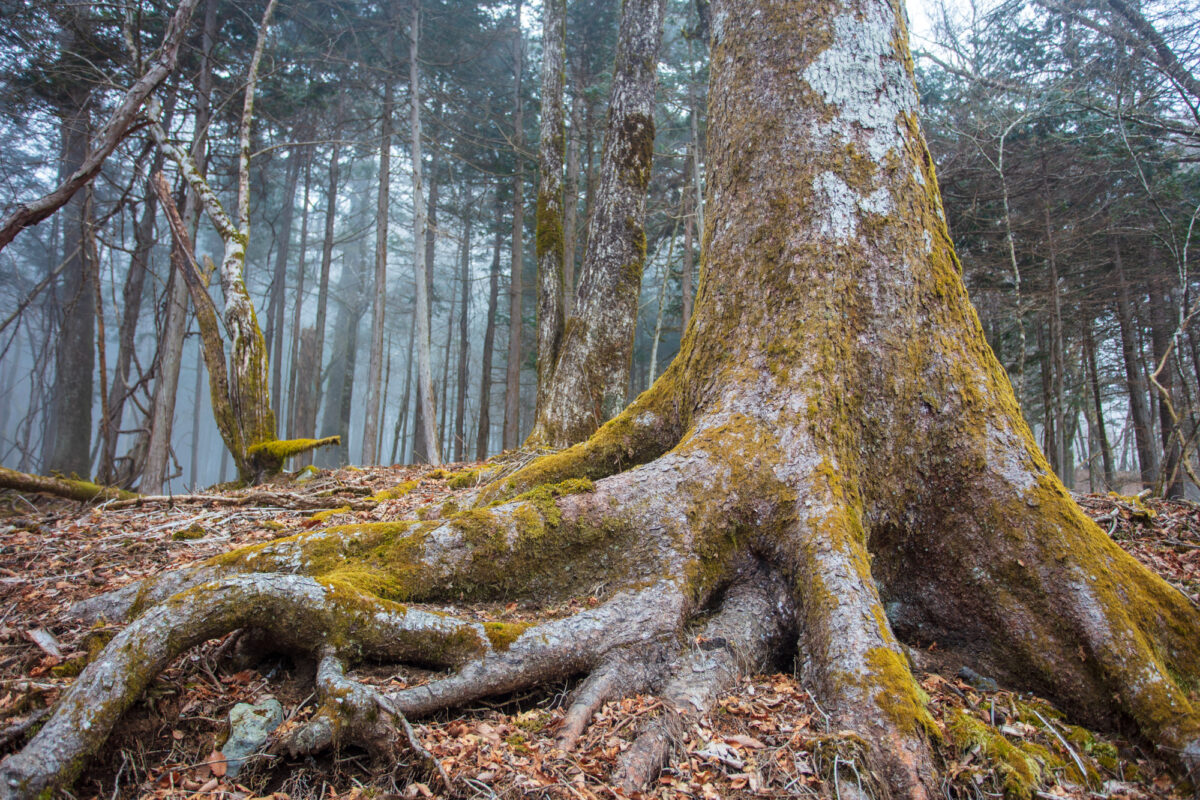
Mount Fuji`s snow covered peak is, however, not the only outstanding aspect of Japan’s highest mountain. Recognized by UNESCO as a World Cultural Heritage in 2013, Mount Fuji and its surrounding area is a “sacred place and source of artistic inspiration” where the landscape beauty and the cultural significance of the region are irrevocably integrated. Believed to be home to gods, the volcano has, since the 12th century, been the center of religious training, mountain-top worship sites and many pilgrimage routes and has continuously inspired many artists, both Japanese and western. In addition to its cultural significance, features of its unique geology, including lakes, lava tree molds, and springs, have also been recognized as part of 25 unique components that make up the UNESCO designated heritage area.
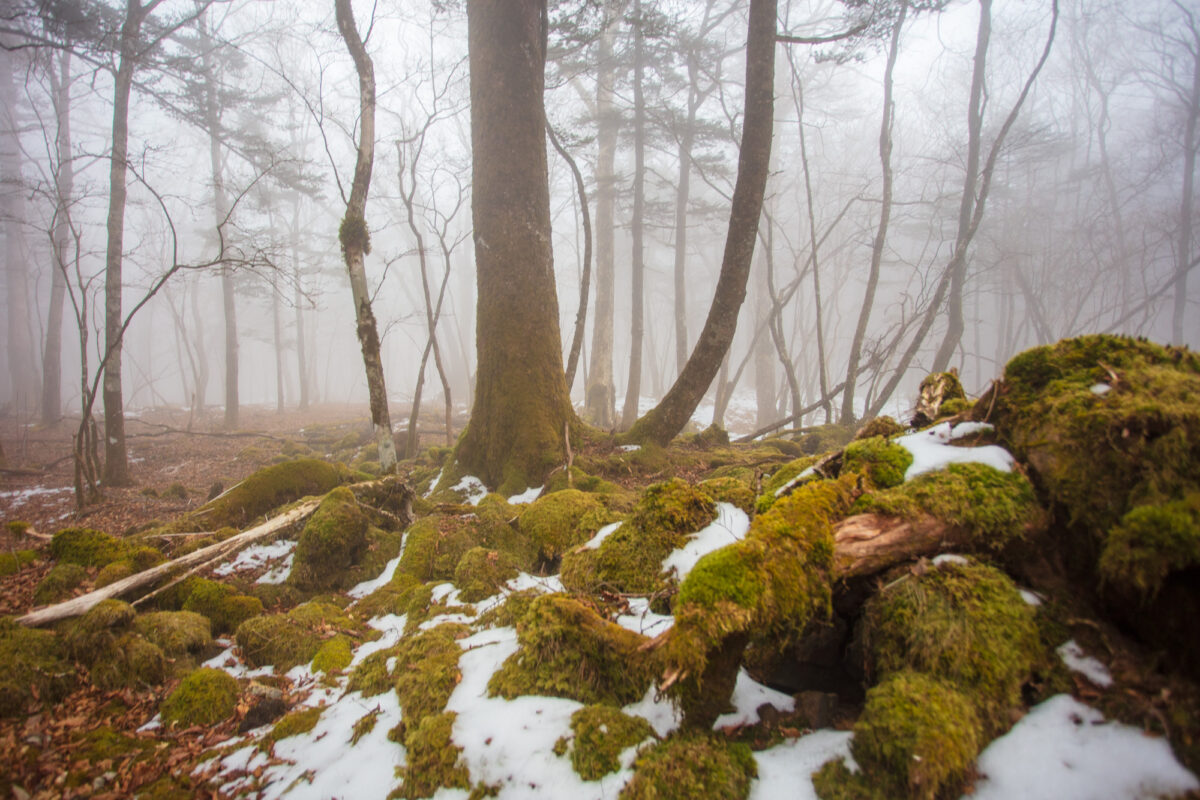
Today I am in Gotemba, accessible by train within 2-hours from central Tokyo, for my most intimate Mount Fuji related experience yet. I will explore one of the many hiking trails at the footsteps of the mountain that will make my way through the dense forests that host ancient pilgrimage routes, shrines, and caves.
Hiking Through the Mystical Forests Guarding Mount Fuji
We meet our guide at Mizugazuka Parking Lot – a 30-minutes car ride from Gotemba (and also easily accessible by bus during the climbing season). This is also where climbers leave their cars to get on the shuttle services that take them to the trailhead of Fujinomiya climbing route, one of the more popular of many routes leading to the peak of Mount Fuji. However, we are here today not to hike to the summit but to explore one of the 13 hiking trails that will introduce us to some of the cultural and geological aspects that make Mount Fuji special beyond its iconic peak.
13 Moderately Difficult Hiking Courses to Choose From
According to our guide, our course for today, Course E, will approximately take 2.5-3 hours at a leisurely pace. The trail will first take us to Suyama Otainai, a lava cave hidden behind a modest torii gate. The route will then start to gently climb to Suyama Kudari where the hikers can take a short detour to Makuiwa, a lava formation created as a result of volcanic eruption. We will then walk by Minamiyama Rest House and slowly make our way back to our starting point through an almost entirely flat path that passes by Suyama Nobori. Occasionally, hikers can also encounter deers or their footsteps on the trail.
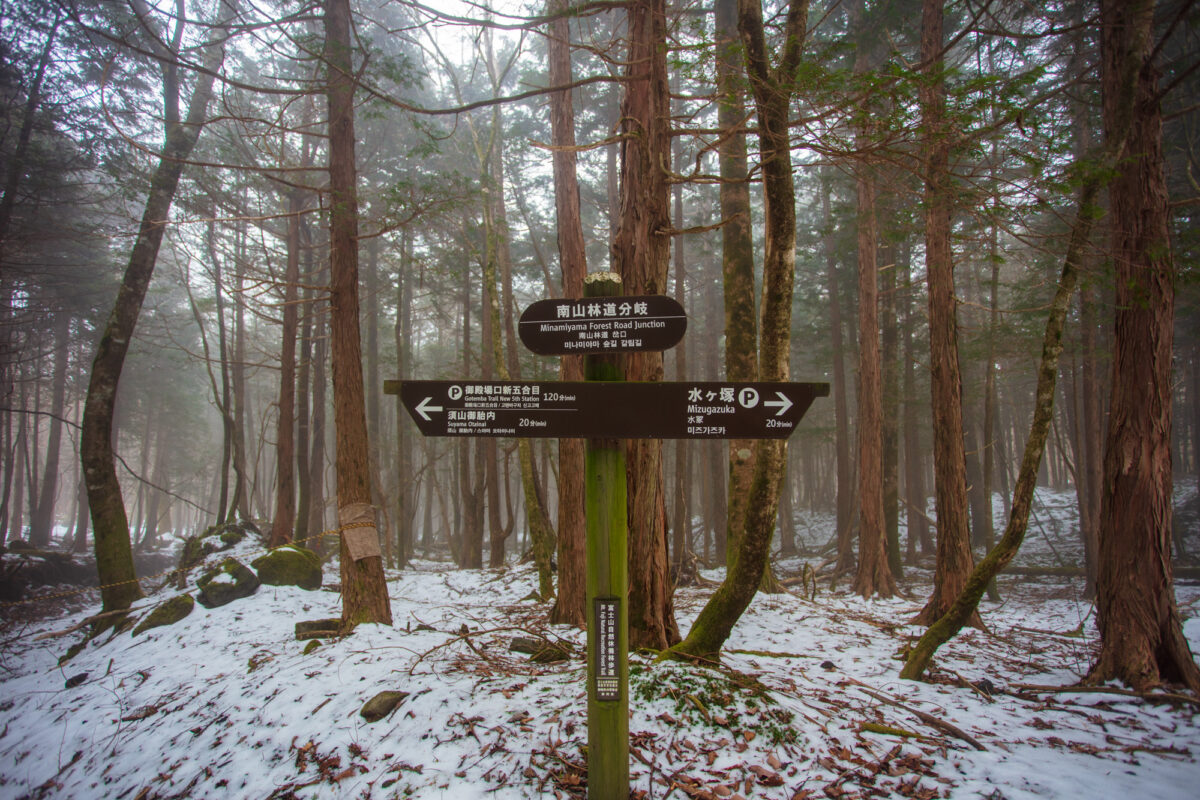
Our starting altitude is 1,450-meters and the highest point of our climb will take us to 1,620-meters. Thanks to the gentle terrain and relatively minor altitude increase, this trail is recommended for most people including families traveling with their kids.
Follow the Fir and Oak Trees
While we are right at the foot of Mount Fuji, the closest that I ever got to this beloved mountain, today the peak is entirely hidden by a thick layer of fog. I am, however, secretly happy about the weather conditions today. The light rain and the fog elevate the mystic aura of the forests guarding Mount Fuji and somehow allow me to better connect to and appreciate all the other components that make the area unique. The dense fog dominating the forest creates the perfect mystic atmosphere that matches the allure of the intriguing accounts of the historical pilgrimage routes dating back to the 14th century and the legends surrounding mountain goddesses.

The trail starts with a mixture of planted fir trees, native oaks, and Japanese larch, among many other specimens. This section of the forest where moss covered trees and rocks create a perfect contrast with the partly snowy and foggy scenery takes us to Suyama Otainai in a short 20-minutes – a volcanic cave created by gas exploding inside the lava.
Suyama Otainai, a Cave Guarded by the Sea of Trees
The almost unnoticeable entrance to the cave is hidden right behind a picturesque torii gate. This is also one of the stops along the historical Suyama Ascending Route to Mount Fuji (present day Gotemba Ascending Route), the history of which is traced back to 1486. The Suyama route, with the longest distance and the largest elevation difference, is known to be one of the most challenging routes to climb Mount Fuji.
Suyama Otainai cave was named “Otainai” because its shape resembles inside of human body. The cave is large enough to accommodate our group of three people (but make sure to watch your head!).
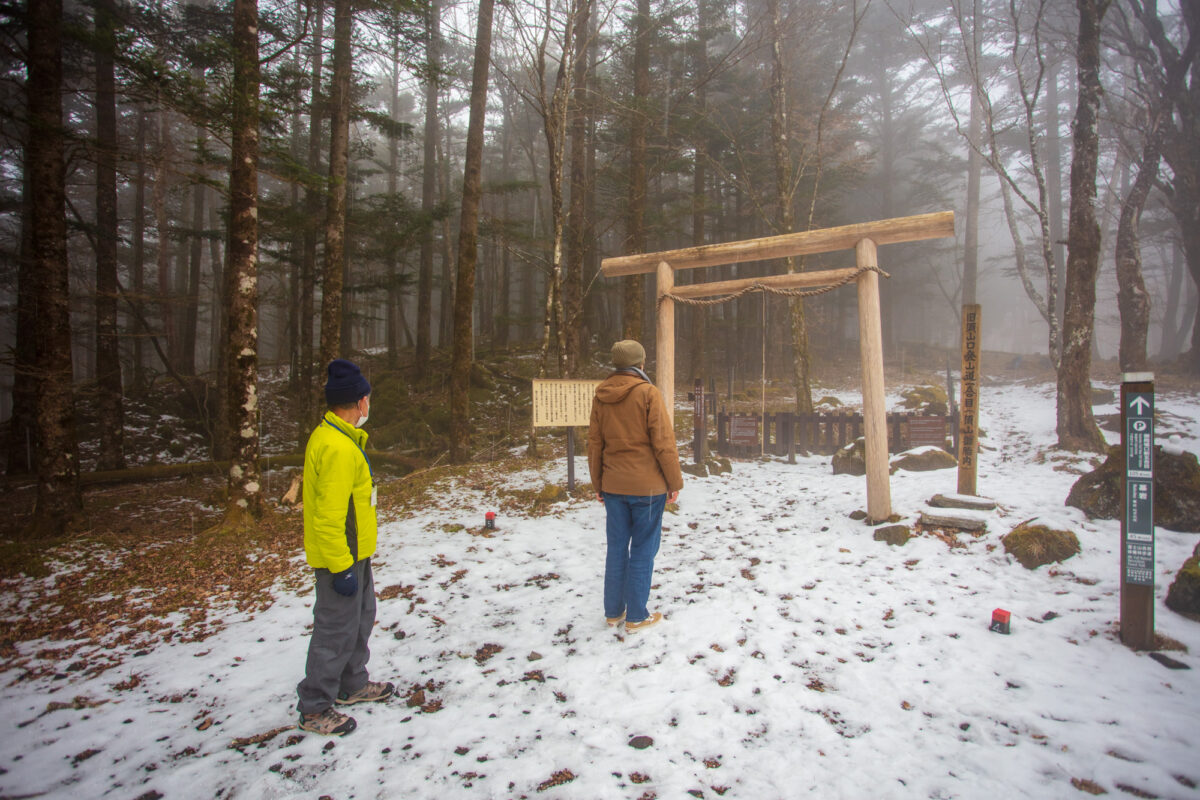
Konohanasakuya-hime is the goddess of Mount Fuji. Inside the cave, there is a small statue of her holding three kids. The cave was known as a place of praying for safe births because she was also believed as a guardian goddess of that. We enter the cave from the opening at the torii side and leave at the other end by climbing the steel ladders that open to a forest – creating the feeling of being embraced by the sea of trees.
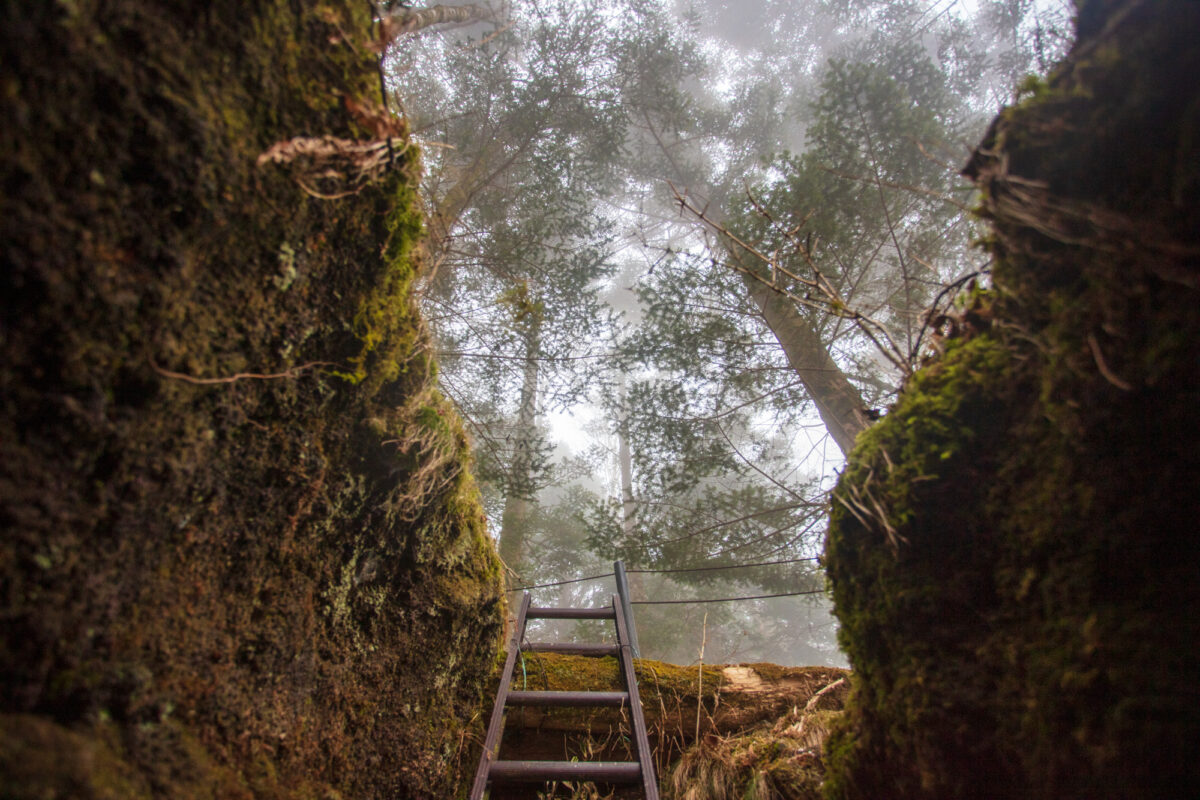
After our brief stop at Suyama Otainai, the route starts to climb gently for 30-minutes leading to Suyama Kudari Station. While the weather is still comfortably mild, it soon starts to snow. This is our guide`s sign for today to skip the short detour to Makuiwa – a rock formation formed as a result of the pile of lava and scoria stream.
Closing the Loop
To close the loop and get back to the Mizugazuka Parking Lot where we started our hike, we have another 40-minutes to hike on a very flat but picturesque trail, made even more delightful thanks to the light snow. We soon pass by Minamiyama Rest House, a relatively large shelter for those looking for a break. However, we do not feel tired, and each enjoy silently walking through the forest enjoying the misty atmosphere and the light snow.
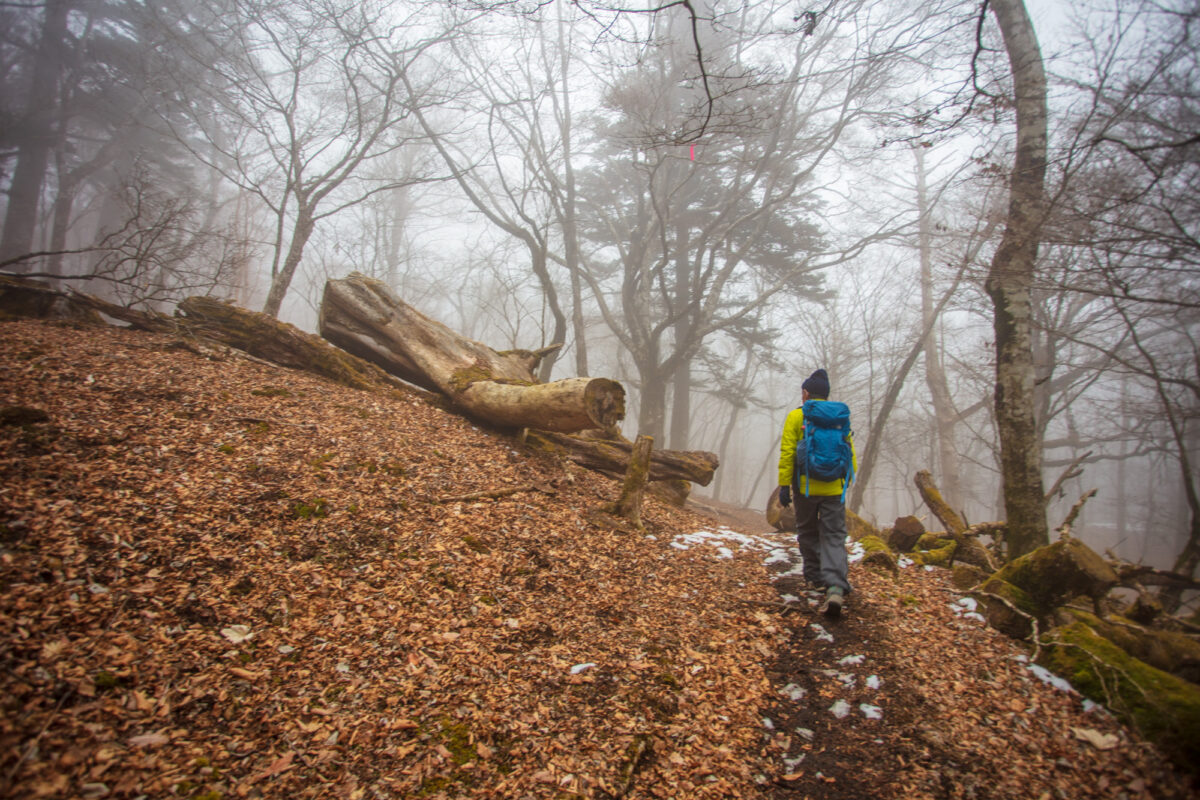
There are a number of sections along this route where one can get almost face to face with the peak of Mount Fuji, but not today. Today is a day to momentarily forget about the peak and more intimately enjoy the moss-covered trees and rocks, the trees affectionately embracing each other, and the infinite sea of branches that dominate the skyline. Lost in our own thoughts in the welcoming silence of the forest, we are soon back at the trailhead. The snow is now getting stronger, signaling to us that it is time to head back to Gotemba.
How to Book the Mount Fuji Eco Study Walk
The hiking tour can be booked for any day of the week with three days advance notice. The meeting point is Mizugazuka Parking Lot. There are two slots to choose from – the morning hike starting at 9am and the afternoon hike starting at 1:30pm. There are both English and Japanese speaking guides. For pricing and booking, please check this link.
How to Get to Mizugazuka Parking Lot from Tokyo for Mt. Fuji Eco Study Walk
Tokaido Main Line connects Tokyo Station to Kozu Station in 70 minutes. From Kozu, visitors can take the Gotemba Line to travel to Gotemba (about 50 minutes). Gotembaguchi 5th Station Bus Line connects Gotemba Station to Mizugazuka Parking Lot (55 minutes) during climbing season in summer or take a taxi from Gotemba Staion.
